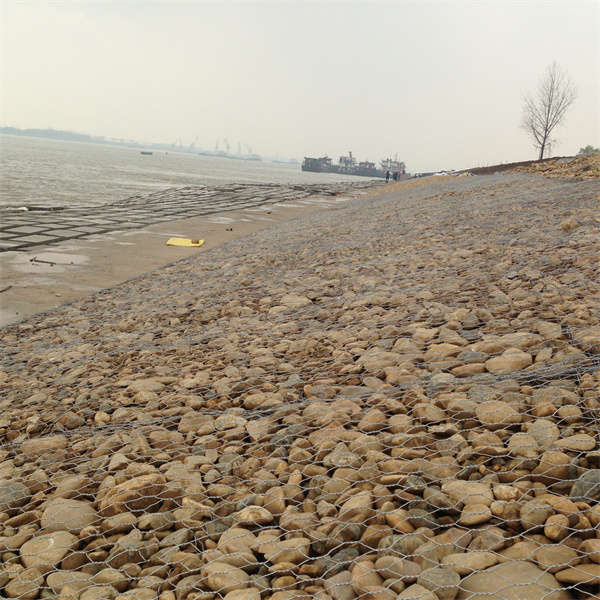gru . 05, 2024 14:26 Back to list
Durable Circular Gabion Baskets for High-Quality Landscape and Architectural Solutions
High-Quality Circular Gabion Baskets A Sustainable Solution for Landscape Erosion Control
In recent years, the demand for effective solutions to combat soil erosion and improve landscape aesthetics has surged. One innovative approach gaining popularity is the use of high-quality circular gabion baskets. These versatile structures have become essential tools in both civil engineering and landscaping, offering numerous benefits while addressing environmental concerns.
Understanding Gabion Baskets
Gabion baskets are essentially wire mesh containers filled with natural stones, designed to stabilize soil and control erosion. Traditionally, gabions have been rectangular or box-shaped, but circular gabion baskets have emerged as a preferred alternative due to their unique advantages. The circular design not only enhances their structural integrity but also allows for better water flow and drainage, making them particularly effective in various terrains and climates.
Benefits of High-Quality Circular Gabion Baskets
1. Enhanced Erosion Control The primary function of gabion baskets is to prevent soil erosion. The weight of the stones within the baskets helps anchor them to the ground, effectively countering the forces of water runoff and wind. Circular gabion baskets, owing to their shape, distribute pressure evenly, making them highly effective in steep or irregular landscapes.
2. Durability and Longevity High-quality gabion baskets are constructed from robust materials such as galvanized steel or welded wire mesh, ensuring they withstand the elements for years without significant degradation. Their durability makes them an ideal choice for areas prone to harsh weather, such as heavy rain or high winds.
3. Environmental Sustainability One of the most significant advantages of using gabion baskets is their eco-friendliness. The natural stones used to fill these baskets can often be sourced locally, reducing transportation emissions. Additionally, they promote vegetation growth over time, as soil can accumulate within the gaps of the stones, creating a micro-ecosystem that supports local flora and fauna.
4. Aesthetic Appeal Circular gabion baskets can be designed to blend seamlessly into the surrounding environment. They can act as decorative features in gardens, parks, and public spaces. By selecting various stone types and sizes, designers can create visually appealing structures that enhance the beauty of any landscape.
high quality circular gabion baskets

5. Cost-Effectiveness Compared to concrete and other traditional construction materials, high-quality circular gabion baskets offer a more affordable option for erosion control. Their relatively low installation costs and minimal maintenance requirements make them an economical choice for both private and public projects.
Applications of Circular Gabion Baskets
The versatility of circular gabion baskets allows for their usage in a wide array of applications
- Riverbank Stabilization Circular gabion baskets are often employed along riverbanks to protect against erosion caused by flowing water. Their shape helps them withstand the force of moving water, while also providing habitats for aquatic life.
- Retaining Walls In areas with significant elevation changes, circular gabion baskets can be effectively used as retaining walls. Their design allows for the accommodation of soil movement and helps maintain structural integrity.
- Noise Barriers Gabion baskets filled with stones can serve as effective noise barriers along highways or in urban environments. They absorb sound and reduce noise pollution, contributing to a more serene atmosphere.
Conclusion
High-quality circular gabion baskets represent an innovative and sustainable solution for addressing erosion control and enhancing landscape aesthetics. Their durability, versatility, and eco-friendly nature make them an ideal choice for various applications, from riverbank stabilization to decorative garden features. As communities increasingly prioritize sustainable practices in construction and landscaping, the popularity of circular gabion baskets is likely to continue growing, making them a cornerstone in the pursuit of environmental harmony and resilience. By investing in these structures, we not only protect our landscapes but also contribute to the preservation of our natural ecosystems for future generations.
-
HESCO Gabion Baskets for Coastal Erosion Prevention
NewsAug.22,2025
-
Longevity and Durability of River Rock Gabion Walls
NewsAug.22,2025
-
How to Integrate Gabion 3D Walls in Urban Planning
NewsAug.22,2025
-
Reno Mattress Gabion Applications in Civil Engineering
NewsAug.22,2025
-
How to Install Wire Mesh for Gabion Baskets Properly
NewsAug.22,2025
-
Best Materials for Filling a Chain Link Gabion
NewsAug.22,2025
-
Wire Mesh Thickness Impact on Gabion Wall Load Bearing
NewsAug.12,2025






